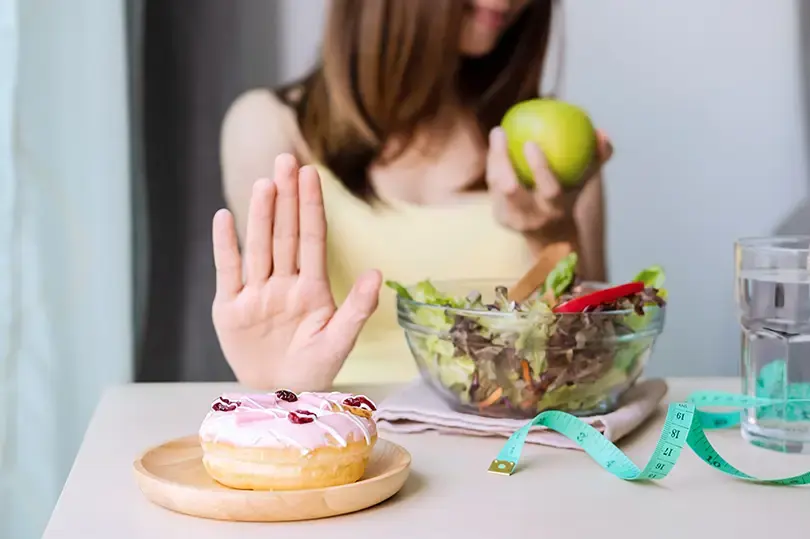Many of us don’t think we have a sweet tooth. We don’t eat cake every day or drink soda with every meal. In fact, we believe we eat pretty healthy. But here’s the truth: according to the American Heart Association, the average adult in the U.S. consumes about 17 teaspoons of added sugar per day, while the recommended limit is only 6–9 teaspoons.
nd sugar isn’t just in desserts. It’s hiding in ketchup, salad dressings, sauces, snacks, bread, “healthy” granola, yogurt — even frozen veggies with glaze. This hidden sugar becomes part of your everyday diet, and your brain starts to depend on it like a legal drug.
Have you ever noticed that once you eat a piece of chocolate, you instantly crave more? Or felt sleepy after a sweet snack? Maybe it’s hard to function in the morning without something sugary in your coffee?
These are signs your body is used to constant glucose stimulation.
So what happens if you completely cut out added sugar for just 10 days?
We’re not talking about reducing sugar — we’re talking about removing it completely. No desserts, no sweet drinks, no granola bars, not even the sneaky sugars in bread or sauces.
Most people think they’ll just feel a little lighter. But in reality? You go through something that feels a lot like sugar withdrawal.
Have you ever noticed that once you eat a piece of chocolate, you instantly crave more? Or felt sleepy after a sweet snack? Maybe it’s hard to function in the morning without something sugary in your coffee?
These are signs your body is used to constant glucose stimulation.
So what happens if you completely cut out added sugar for just 10 days?
We’re not talking about reducing sugar — we’re talking about removing it completely. No desserts, no sweet drinks, no granola bars, not even the sneaky sugars in bread or sauces.
Most people think they’ll just feel a little lighter. But in reality? You go through something that feels a lot like sugar withdrawal.
Day 1–2: “Where’s my cookie?!”
Right after giving up sugar, the brain starts to panic. Studies show that sugar activates the same pleasure centers as some powerful substances. So don’t be surprised:
Tip: Drink more water, and eat more protein and healthy fats to keep your blood sugar stable.
Day 3–4: The Energy Crash
Your glucose levels start to stabilize, and your body misses its quick sugar fixes. You may experience:
This is the hardest part. Don’t quit — it gets better soon.
Right after giving up sugar, the brain starts to panic. Studies show that sugar activates the same pleasure centers as some powerful substances. So don’t be surprised:
- You crave sweets even when you’re full
- You feel irritable, anxious, or tired
- You get headaches (especially if you drank sugary drinks often)
Tip: Drink more water, and eat more protein and healthy fats to keep your blood sugar stable.
Day 3–4: The Energy Crash
Your glucose levels start to stabilize, and your body misses its quick sugar fixes. You may experience:
- Low energy, wanting to lie down all day
- Afternoon sleepiness
- Brain fog — it’s hard to focus or think clearly
This is the hardest part. Don’t quit — it gets better soon.

Day 5–6: Signs of Change
Now the good stuff starts:
Your body begins switching to burning fat instead of relying on sugar hits.
Day 7–10: Clarity
Many people say they’re shocked to realize how much sugar used to control their energy, mood, and focus.
Now the good stuff starts:
- You wake up more easily
- You’re not dreaming of sugar at night anymore
- Your hunger levels normalize — no more constant snacking
Your body begins switching to burning fat instead of relying on sugar hits.
Day 7–10: Clarity
- Your skin looks clearer
- Your mood feels more stable
- You feel real, clean energy — not a sugar high, but steady alertness
Many people say they’re shocked to realize how much sugar used to control their energy, mood, and focus.

What Happens After 10 Days?
Your sugar cravings drop. You might try a dessert and find it way too sweet.
Your taste buds wake up. Natural foods taste better. You feel more in control of your eating.
How to Survive the Sugar Detox
Your sugar cravings drop. You might try a dessert and find it way too sweet.
Your taste buds wake up. Natural foods taste better. You feel more in control of your eating.
How to Survive the Sugar Detox
- Eat more protein and fiber (veggies, nuts, eggs, fish)
- Include healthy carbs like sweet potatoes, quinoa, and oats
- Swap sweets for berries or 85% dark chocolate
- Sleep 7–8 hours — poor sleep increases sugar cravings
- And most of all — be kind to yourself. Quitting sugar isn’t punishment. It’s self-care.
Ready to try it?
Plan a 10-day sugar detox and pay attention to how your body feels.
You might be surprised — in the best way possible.
Your body will thank you.






